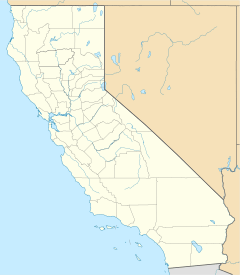Shamrock, Imperial County, California facts for kids
Quick facts for kids
Shamrock
|
|
|---|---|
|
Former settlement
|
|
| Country | United States |
| State | California |
| County | Imperial County |
| Elevation | -197 ft (-60 m) |
Shamrock was once a small settlement in Imperial County, California. It was located in a desert area, about 4 miles (6.4 km) west of a town called Calipatria. Shamrock was a stop along the Southern Pacific Railroad line. It was quite unique because it was situated 197 feet (60 meters) below sea level. By 1947, Shamrock no longer appeared on maps.
Contents
What Was Shamrock?
Shamrock was a "former settlement." This means it was a place where people once lived or worked, but it is no longer inhabited today. Many small settlements like Shamrock grew up around important places, such as railway lines or mining areas. They often served a specific purpose and then faded away when that purpose was no longer needed.
Where Was Shamrock Located?
Shamrock was found in Imperial County, which is in the southeastern part of California. This area is known for its hot desert climate. The land where Shamrock was located is part of the Imperial Valley, which is famous for being below sea level. Being "below sea level" means the land is lower than the surface of the ocean. It's like being in a big bowl that dips down lower than the water.
The Southern Pacific Railroad
The Southern Pacific Railroad was a very important railway company in the history of the United States. It built many tracks across the western states. These railways helped people travel and moved goods like food and supplies. Small stops, like Shamrock, were often set up along these tracks. They might have been places for trains to refuel, for workers to live, or for goods to be loaded and unloaded.
Why Did Settlements Like Shamrock Appear?
Many small settlements in the American West, including those in California, were created for specific reasons.
- Railroad Stops: Places like Shamrock often started as simple stops along a new railway line. These stops were needed for trains to take on water, coal, or to allow passengers to get on or off.
- Resource Extraction: Some settlements grew near mines or other places where natural resources were found.
- Agriculture: In areas like the Imperial Valley, settlements could support farming communities, even in the desert, thanks to irrigation.
Life in a Small Settlement
Life in a small, remote settlement like Shamrock would have been challenging. People likely lived in simple homes and worked hard, often for the railroad or in local industries. These places were important for connecting different parts of the country.
What Happened to Shamrock?
Shamrock, like many small railway stops, eventually disappeared. By 1947, it was no longer shown on maps. There are several reasons why a settlement might vanish:
- Changes in Transportation: As technology improved, trains became more efficient and didn't need as many stops. New roads and highways also reduced the need for small railway settlements.
- Economic Shifts: If the main reason for the settlement (like a specific industry or a need for a railway stop) went away, people would move to find work elsewhere.
- Harsh Environment: Living in a desert environment, especially below sea level, could be very difficult. Without a strong reason to stay, people might have moved to larger, more comfortable towns.
Today, Shamrock is just a historical location, a reminder of the many small places that helped build California's history.


